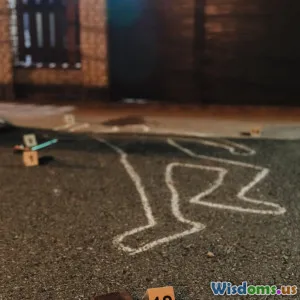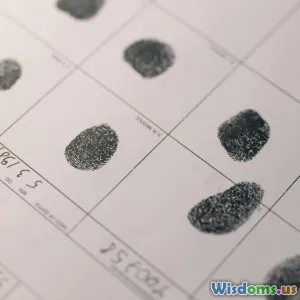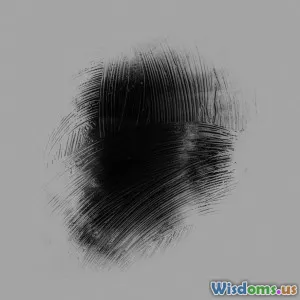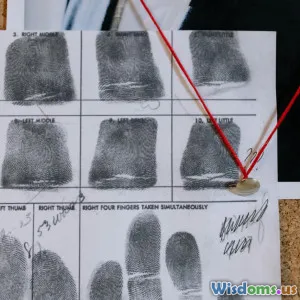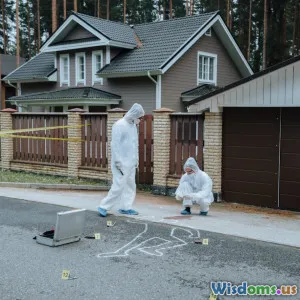
The Role of Ballistics Analysis in Solving Homicide Cases
9 min read Discover how ballistics analysis deciphers firearms evidence to solve homicide cases and bring justice. (0 Reviews)
The Role of Ballistics Analysis in Solving Homicide Cases
When a gunshot echoes through a city street or a quiet suburban neighborhood, it leaves behind more than just witnesses shaken in fear—it leaves vital traces of evidence. Among these, ballistics analysis stands as one of the most powerful forensic tools in unraveling homicide mysteries. This scientific examination of firearms, bullets, and gunshot residues not only helps law enforcement link suspects to crimes but also reconstructs the very events leading to a victim's tragic fate.
In this article, we explore the intricate world of ballistics analysis within criminology and crime investigation, unpack how experts employ these forensic techniques, and consider the profound impact this discipline has on solving homicide cases.
Understanding Ballistics: Beyond the Gun
Ballistics refers broadly to the study of projectiles in motion, but forensic ballistics specifically examines firearms and related evidence to establish connections between weapons and crimes. It is typically divided into three main areas:
- Internal Ballistics: What happens inside the gun from trigger pull to bullet exit.
- External Ballistics: The bullet's flight path through the air.
- Terminal Ballistics: The bullet's impact on a target.
While internal and external ballistics provide fundamental physics knowledge, forensic experts largely engage with terminal ballistics and toolmark analysis to gather evidence in homicide cases.
Toolmark Examination: Uniqueness of Firearms
Every firearm leaves distinctive marks on bullets and cartridge casings as they pass through the barrel or are ejected. These include rifling grooves, firing pin impressions, extractor marks, and breechface impressions. Much like a fingerprint, these microscopic striations are unique to each weapon due to manufacturing processes and wear from use.
The comparison microscope is a pivotal instrument in forensic ballistics. By placing a recovered bullet and a test-fired bullet side by side under high magnification, analysts determine if they originate from the same firearm.
Gunshot Residue Analysis
Ballistics also involves detecting gunshot residue (GSR) around the firing area or on suspects' hands and clothing. The residue comprises particulate matter expelled when a gun is fired, containing elements such as lead, barium, and antimony. GSR detection assists investigators in validating whether an individual recently discharged a weapon or was in close proximity to a shooting.
Ballistics Analysis in Homicide Investigations
When a homicide involves a firearm, the investigative process transforms into a forensic puzzle demanding careful examination. Let’s explore how ballistics analysis contributes at various stages.
Crime Scene Processing and Evidence Collection
Accurate ballistics work begins at the crime scene. Investigators meticulously document bullet trajectories using laser measurement devices or rods to reconstruct the shooting angle and position of shooter and victim. Cartridge cases, bullets, and any recovered firearms are preserved for laboratory examination.
The trajectory analysis can contradict or confirm witness statements or suspects’ claims. For instance, angle and distance calculations might demonstrate whether a shot was self-inflicted or fired by another person.
Matching Ballistic Evidence to Firearms
Once evidence reaches forensic labs, bullet and casing comparisons frequently become the linchpin in linking a weapon to the homicide.
A famous example is the use of ballistics in the 2007 murder case of Cha Vang in Minneapolis, where experts linked bullets recovered from the victim’s body directly to a handgun held by the suspect, leading to conviction despite conflicting eyewitness testimony.
Linking Multiple Crimes and Suspects
Ballistics databases like the National Integrated Ballistic Information Network (NIBIN) maintained by the Bureau of Alcohol, Tobacco, Firearms and Explosives (ATF) allow agencies to cross-reference ballistic evidence nationwide. This can connect seemingly isolated homicides to a single firearm or suspect, unraveling criminal patterns or serial offenses.
For instance, NIBIN was instrumental in the investigation of the “Baltimore Post Office Shooter” case in 2010, aiding law enforcement in identifying the firearm used in multiple shootings and narrowing the suspect pool.
Validating or Refuting Witness Testimonies
Reconstructing bullet trajectories and firearm discharge characteristics can reveal inconsistencies between witness accounts and forensic evidence. A shooting scenario described by witnesses might not align with the trajectories determined scientifically, leading investigators to reassess testimonies and develop stronger case narratives.
Technological Advances Enhancing Ballistics
Ballistics analysis has benefited enormously from technological strides that improve accuracy and efficiency.
- 3D Imaging and Virtual Reconstruction: Forensic experts can now generate detailed digital models of crime scenes, allowing for virtual trajectory analysis.
- Automated Ballistic Identification Systems: These systems expedite the comparison of ballistic evidence to vast databases, dramatically shortening investigation times.
- Chemical GSR Analysis: Sophisticated instruments detect minute traces of gunshot residue with precision, aiding in locating shooters who attempted to conceal evidence.
As these technologies evolve, they strengthen the ballistics field’s capability to solve even complex homicide cases faster and with higher forensic confidence.
Challenges and Considerations
Despite its critical role, ballistics analysis does face limitations and concerns:
- Handling Contamination: Ballistic evidence is delicate. Improper collection or storage can contaminate or degrade unique markings, complicating analysis.
- Subjectivity in Interpretation: Although toolmark examiners rely on science, interpretation of microscopic marks can entail subjective judgments. Continuous training, standardized protocols, and peer review help mitigate this.
- Legal Scrutiny: Defense attorneys often challenge ballistics testimony in courts, emphasizing the need for transparent methodologies and rigorous validation of findings.
Nonetheless, the discipline remains indispensable under guarded procedural safeguards.
Conclusion: The Shield of Science in the Pursuit of Justice
Ballistics analysis offers more than just a method to identify weapons; it provides a scientific voice for victims and a pathway to uncover truth in the murky aftermath of violence. By meticulously decoding the physical evidence left by firearms, forensic ballistics bridges the gap between crimes committed and justice served.
From local police labs to national systems like NIBIN, ballistics acts as a forensic cornerstone that not only solves homicides but also deters future offenses by empowering investigators with reliable, objective tools.
For those committed to the science of crime solving, ballistics opens a world where meticulous detail triumphs over chaos and every bullet tells a story worth hearing.
References
- National Institute of Justice, "Firearms and Toolmark Identification Department"
- Bureau of Alcohol, Tobacco, Firearms and Explosives (ATF), NIBIN Program
- Saferstein, Richard. Criminalistics: An Introduction to Forensic Science, 12th Edition
- Houck, Max M., and Floyd, Jay A. Fundamentals of Forensic Science, 3rd Edition
- Case Study: Minnesota’s “Hmong Shooting” Conviction, 2007
- Baltimore Sun Archives, 2010 Post Office Shooter Investigation
Rate the Post
User Reviews
Popular Posts











